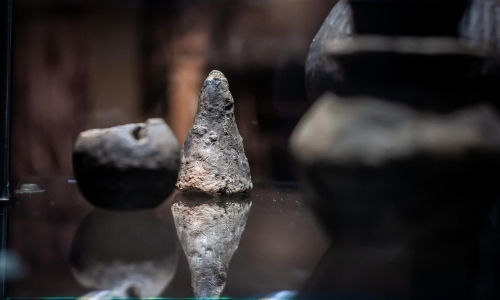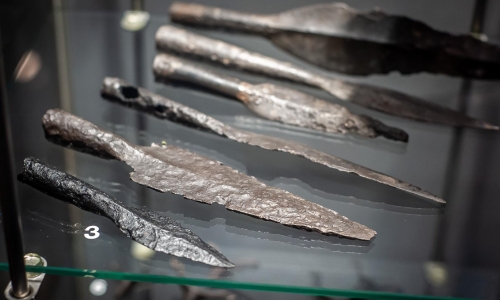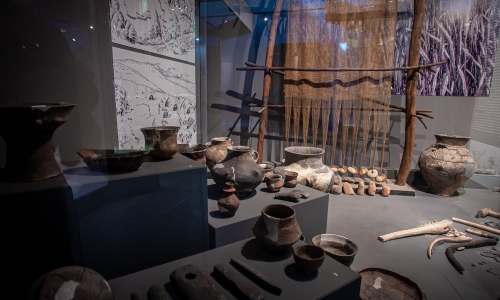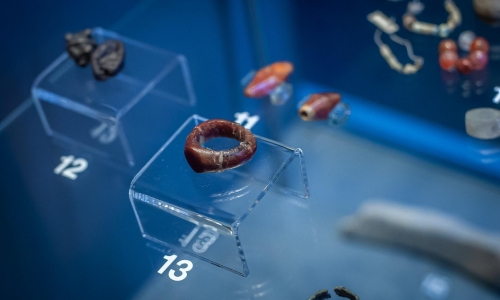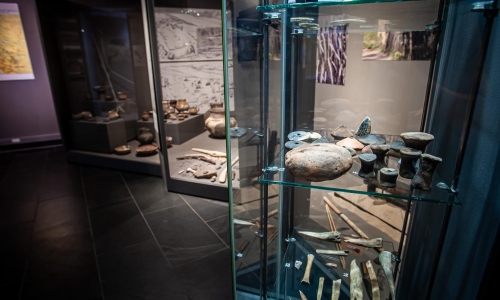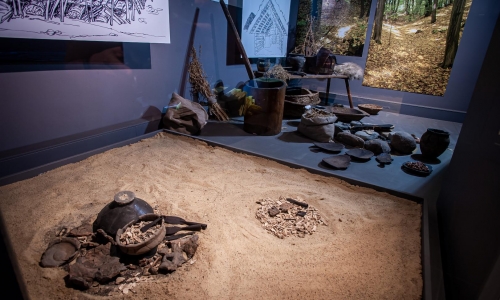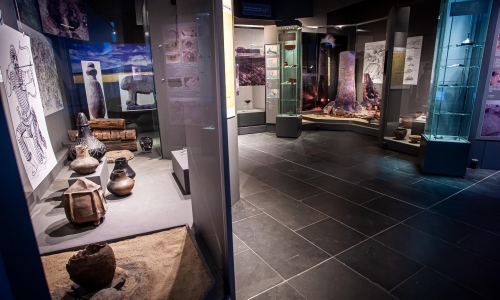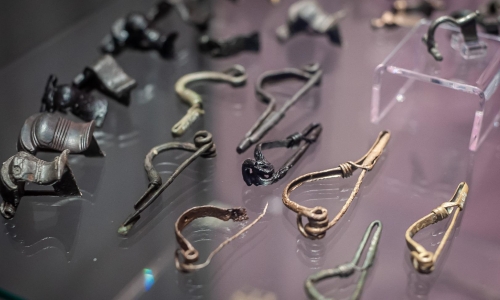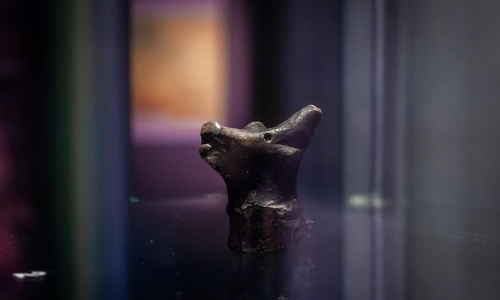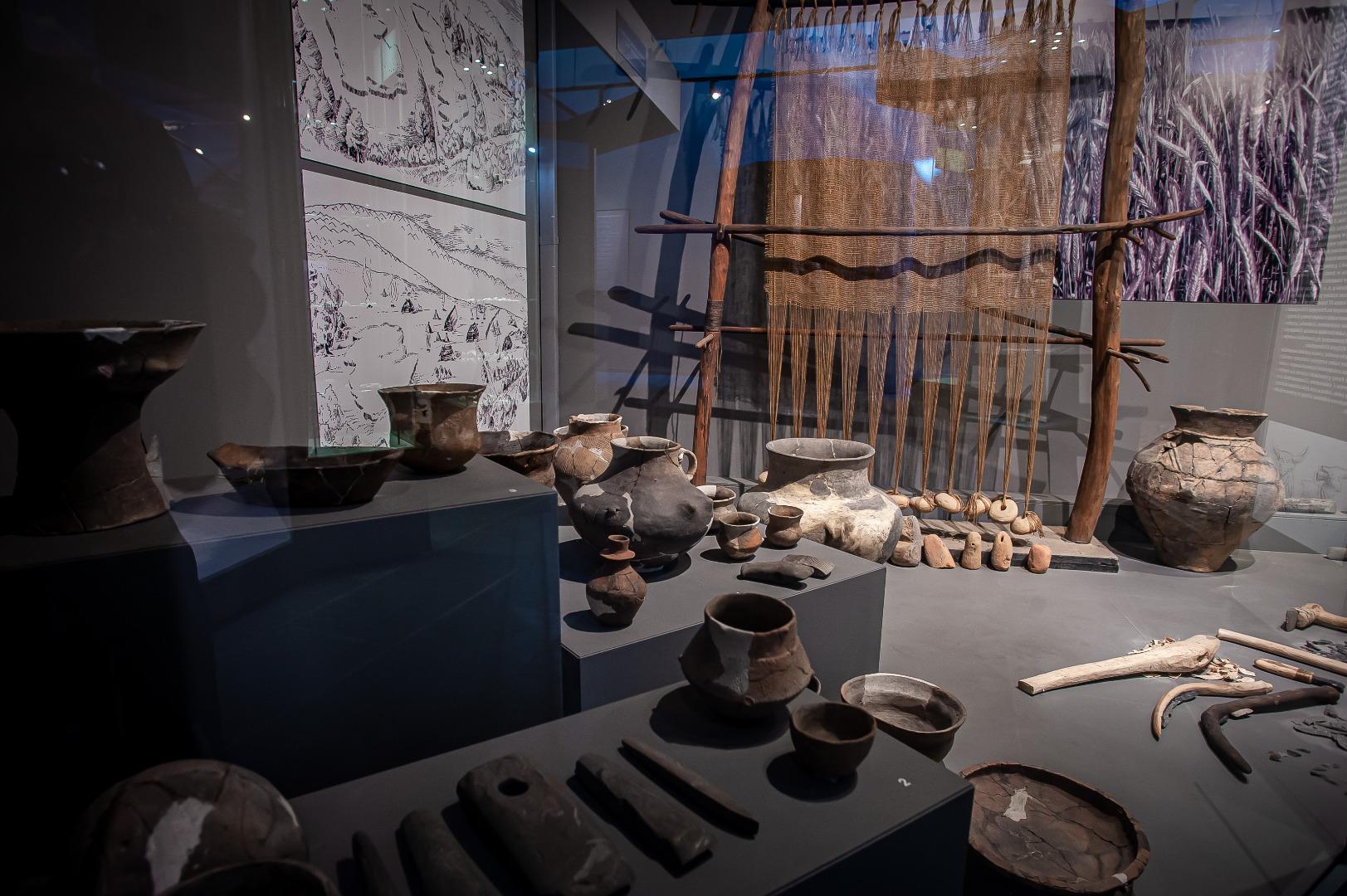
The Opole region in the Prehistoric Period and in the Early Middle Ages.
The permanent exhibition " The Opole region in the Prehistoric Period and in the Early Middle Ages." was opened to the public in 2009. It is located in the basement of a new exhibition pavilion which was erected within the "Mons Universitatis" project. The authors of the exhibition script are Ewa Matuszczyk-Rychlik and Elwira Holc and the artistic arrangement was created by Krzysztof Burnatowicz.
The exhibition was conceived as a comprehensive presentation of the prehistory of the region, covering the period from about 300,000 years ago till the early Middle Ages. The changes that had taken place in all areas of life in subsequent epochs ‒ stone, bronze and iron ‒ were presented in a perspicuous and complete manner. Archaeological relics ‒ material remains of human activity in a given area ‒ are the main source of information about forms of settlement, dwelling construction, food procurement and raw materials from which everyday objects, weapons or ornaments were made, as well as knowledge on aspects of spiritual culture. Particularly noteworthy are decorations and numismatic items retrieved from the Celtic settlement in Nowa Cerekwia (Głubczyce county) and the 12.3-meter-long dugout boat from the 4th century AD, discovered in 1991 in Lewin Brzeski (Brzeg county).
The exhibition features 7 monitors with animations and short films showing, for example, techniques of making selected everyday objects, weapons or ornaments. The stands are also equipped with applications that allow a visitor to play a virtual archaeologist. Particularly worth mentioning is the arrangement of a mockup cave, inhabited by a group of Neanderthals sitting by a ‘live’ bonfire. Another landmark is an interactive infokiosk where, by using a barcode reader placed on containers with various products or raw materials, a visitor can obtain information about the functions, history, place of discovery or method of production of a scanned artifact. At this stand, one can also learn about the history of the discovery ‒ and above all, access computer reconstructions of two human faces: the face of a woman who lived and died in the area of today's Polska Cerekwia (Kędzierzyn-Koźle county) 5,500 years ago, and the face of a man who lived in Opole in the 14th century and was buried in the cemetery at today's Szpitalna Street. In order to illustrate the method of manufacturing and the appearance of tools, weapons or ornaments from subsequent chronological periods, their full reconstructions were placed alongside the extant relics. The exhibition was enriched with copies of three unique troves that were discovered in the 19th century and form part of the collections of the Archeological Museum of Wroclaw, the branch of the City Museum of Wrocław.
This is the so-called treasure from Pilszcz (Głubczyce county), a trove of bronze products imported from Woskowice Małe (Namysłów county) and a silver cup from the "princely grave" from Opole-Gosławice.
The exhibition was prepared mainly from museum’s own holdings and from the collections of the Archaeological Museum, Branch of the City Museum of Wrocław.




